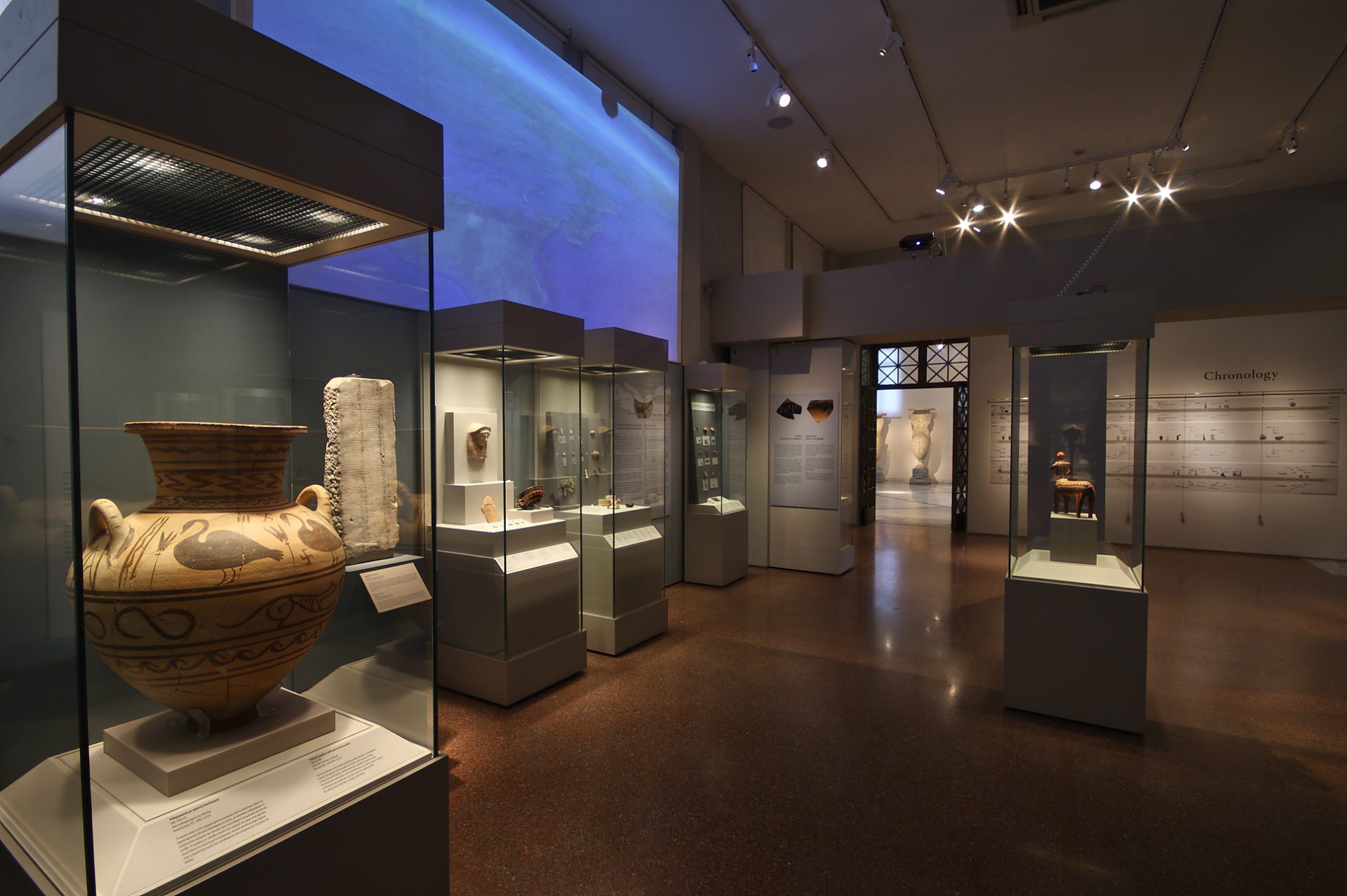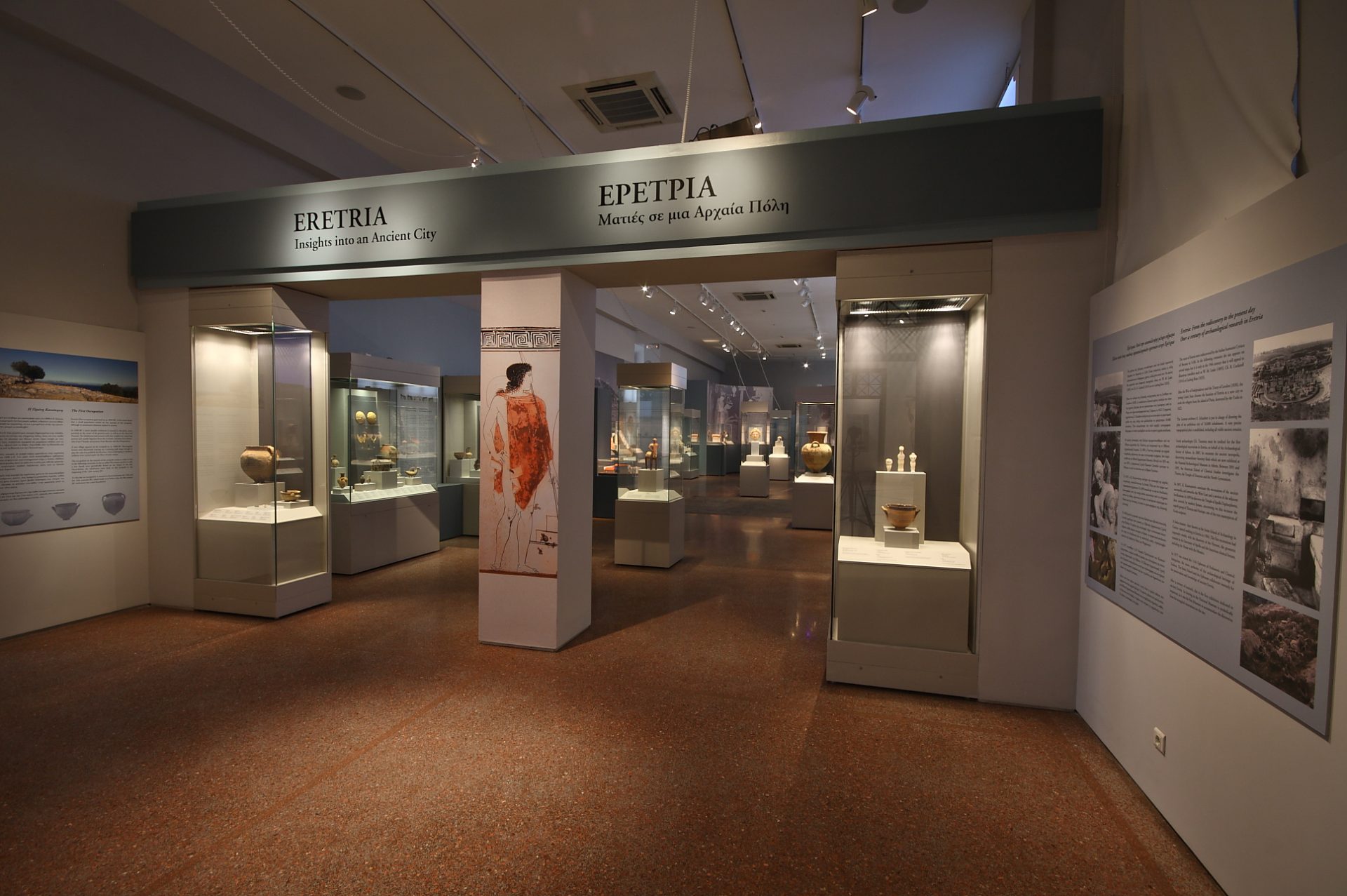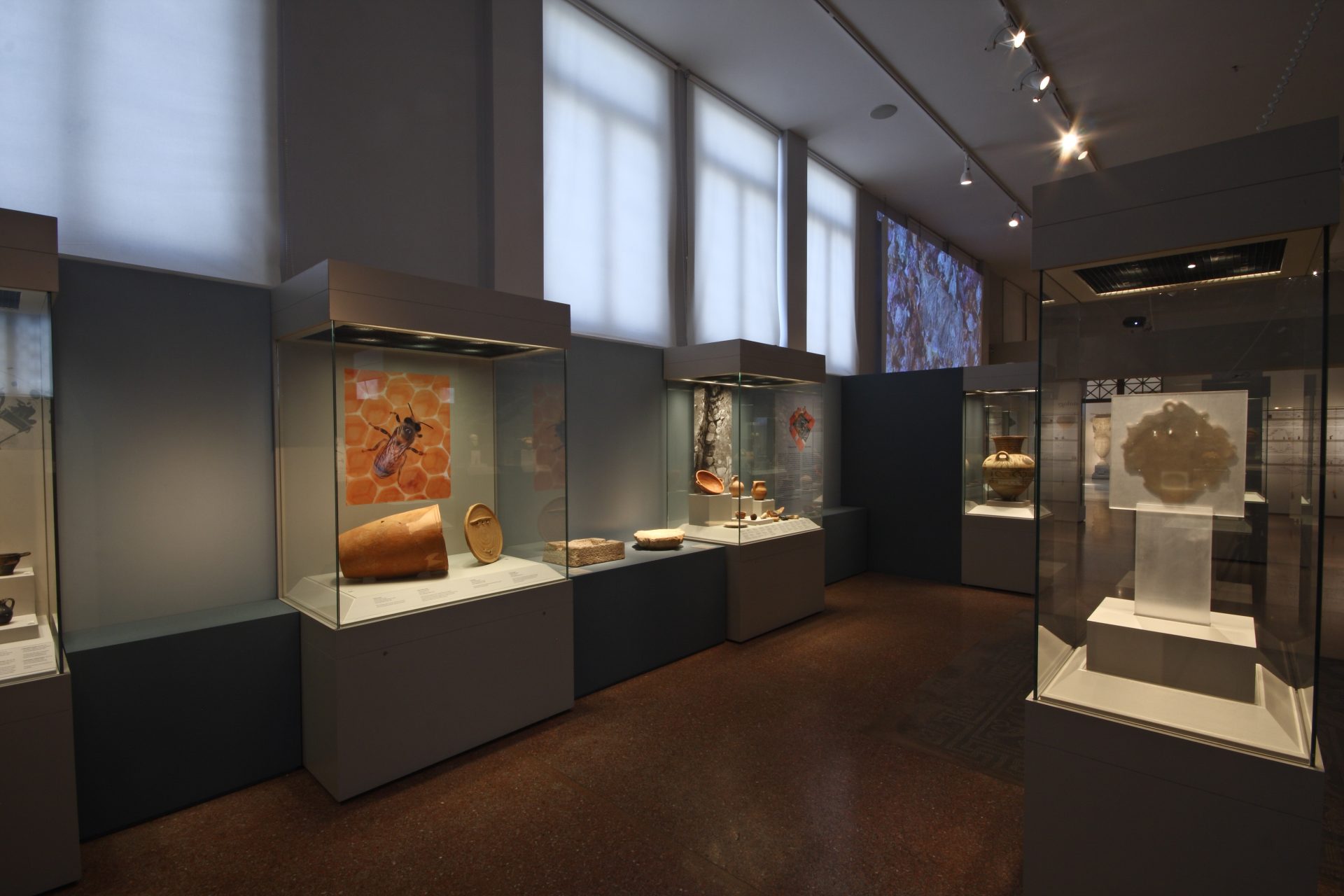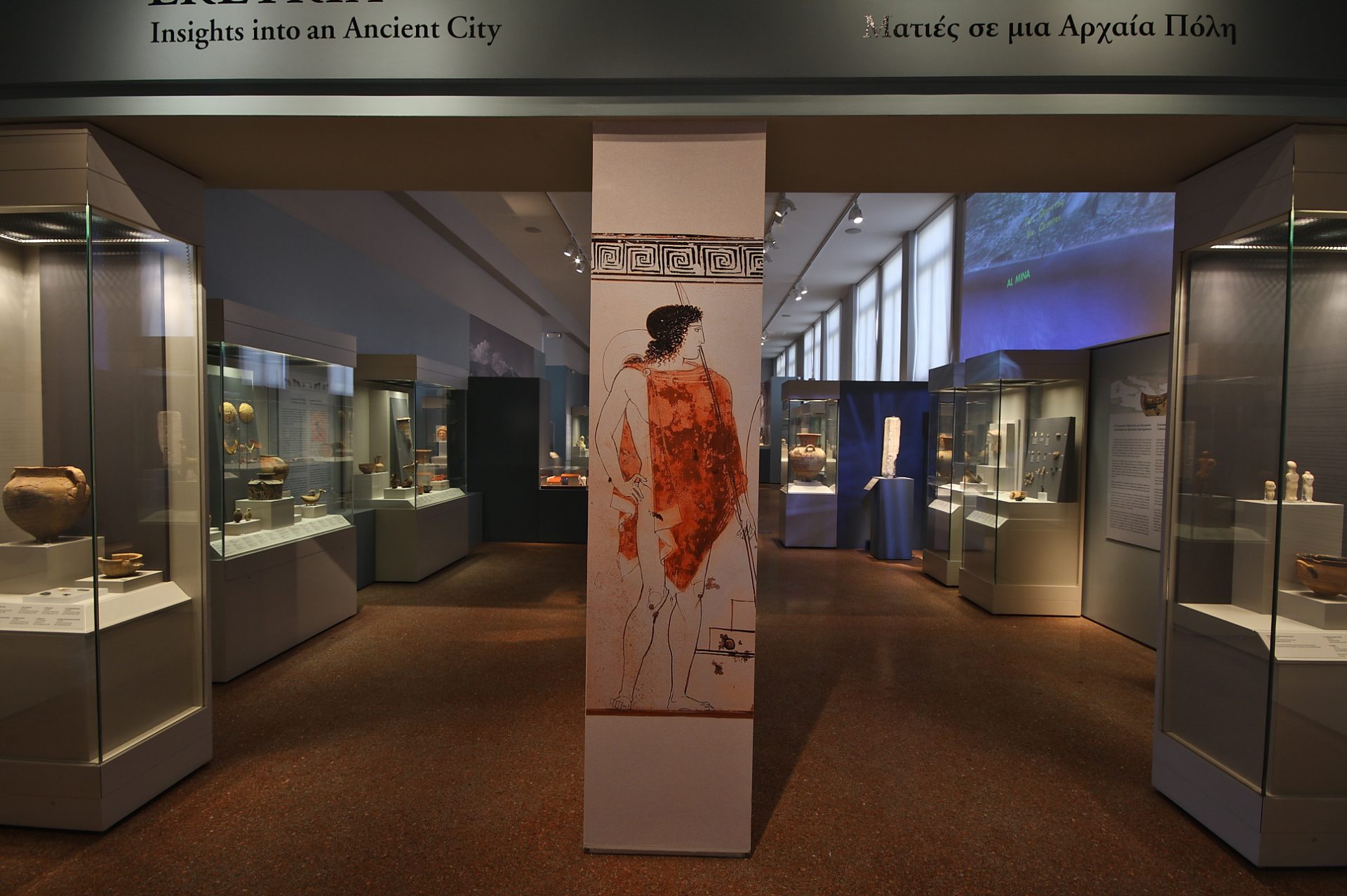APR 2010
MONDAY
AUG 2010
WEDNESDAY
Eretria: Insights into an Ancient City
The temprorary exhibition titled «Eretria, insights into an ancient city», was presented in the National Archaeological Museum from 27 of April to 24 of August 2010.
For the organization of this exhibition there was a harmonious and constructive collaboration of the National Archaeological Museum, the Swiss Archaeological School in Greece, and the 11th Ephorate of Prehistoric and Classical Antiquities. Archaeological finds of all kinds, numbering 437 in total, composed the picture of this important city of Euboea and narrated its history from its foundation in the 8th century B.C. up to the end of Antiquity and the early Byzantine times, when its traces gradually faded away.
The illicit trafficking of antiquities in the area of Eretria during the last quarter of the 19th century, with finds of exquisite art having been smuggled abroad, initiated the first research expeditions in the city. The first rich excavation finds from tombs, mainly high quality ceramic works and jewellery were transported to the National Archaeological Museum. The ruins of the Archaic temple of the city’s patron, Apollo Daphnephoros, came to light at the beginning of the 20th century by the archaeologist K. Kourouniotis. It was also then that the excellent sculptures from the decoration of one of its pediments, most probably the west one, came to light. There followed investigations of limited scale by the Archaeological Society and the American School of Classical Studies, but in 1964 the Greek state assigned the systematic excavation of Eretria to the Swiss Mission, which having taken the name Swiss Archaeological School in Greece, continues research up to date.
The research projects of the Swiss School were of great importance, since they unearthed many finds and buildings that shed light on quite a few aspects of the history of Eretria and complement to a considerable degree the information from ancient texts.
After Athens the exhibition was transferred to the Antikenmuseum und Sammlung Ludwig of Basel from the end of September 2010 to January 2011.
The expenses for the presentation of the exhibition were covered by the Swiss Archaeological School.
The exhibition narrative unfolded in four big units:
A. Foundation of the city and its position in the Helladic area in the Geometric period
The first unit included those elements that relate to the foundation of Eretria, its first stages and its establishment.
Β. City of the mortals
The second unit presented the life of the inhabitants of Eretria in their city. In the first part, aspects of the private life were examined, while in the second one those of the public one. The Classical and Hellenistic houses of Eretria are among the best preserved in the Greek region.
C. City of the gods
The next unit was titled «the city of the gods» and focused on the cults and sanctuaries of Eretria. The excavations have uncovered some of the city’s sanctuaries, such as that of Athena, of Demeter and Kore, of Isis and above all of Apollo Daphnephoros, the patron god of Eretria, whose temple was unearthed at the beginning of the 20th century. However, portable finds also attest to the cult of Artemis and Aphrodite. The cult of the emperor in Roman times was performed at the Sebasteion, which was uncovered rather recently.
D. City of the dead
The last unit, with which the exhibition concluded, referred to the cemeteries of Eretria from the Geometric period to the end of antiquity. Through the funerary goods on display, the burial customs and beliefs of the Eretreans about death and the afterlife were presented, and, at the same time, the prosperity of the city and its inhabitants was underlined, as the latter were offering abundant funerary goods to their dead.
The catalogue of the exhibition
The catalogue of the exhibition, outcome of the excellent collaboration of the National Archaeological Museum, the Swiss Archaeological School and the 11th Ephorate of Prehistoric and Classical Antiquities, is in fact a monograph on Eretria. Its contents are structured according to the units of the exhibition. General and specialized topics, however, which is not possible to be illustrated through finds, are presented and analyzed in a multitude of texts written by Swiss and Greek archaeologists.
Links:
Swiss Archaeological School in Greece: www.unil.ch/esag
Embassy of Switzerland in Greece: www.eda.admin.ch/athens
11th Ephorate of Prehistoric and Classical Antiquities: www.yppo.gr
Participating Museums:
National Archaeological Museum
Archaeological Museum of Eretria
Archaeological Museum of Chalkis
Archaeological Museum of Olympia
Archaeological Museum of Samos
Numismatic Museum Benaki Museum
Musei Capitolini
Montemartini Collection






